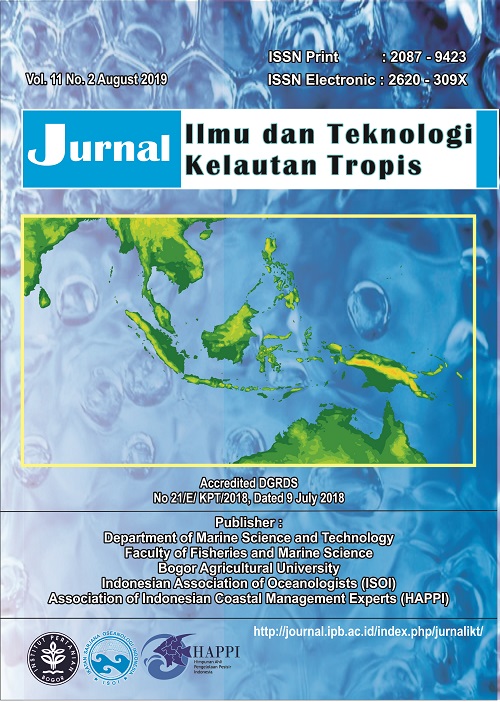CHEMICAL, MICROBIOLOGY CHANGES AND DETECTION OF HDC GENE ON LONGTAIL TUNA Thunnus tonggol DURING CHILLING TEMPERATURE STORAGE
Abstract
Histamine is a biogenic amine that appear during post moterm phase on the fish flesh that contain high content of histidine. The higher level of histamine can be reduced by good handling practice to maintain fish quality for example: using chilling temperature. This research aimed to determine chemical and microbiology changes from longtail tuna Thunnus tonggol and the time when hdc gene can be detected during chilling temperature storage 8±3°C. This research design was a completely randomized design (CRD) with parameters of differences in fish storage time (1,2,3,4,5,6,7 days) and ice ratio 1:1. The results showed that the tuna fish experienced quality deterioration for 7 days of storage. Organoleptic values and pH decreased during storage and on the seventh day the fish were in the rigormortis phase. TVB and TPC values increased during storage and on the sixth day storage has passed the safe limit for consumption. Histamine levels of this tuna on the seventh day were 1.96 ppm. HDc gene detection using the PCR method showed negative results in each treatment. The protein profile that was formed during storage displayed to separate because of the cathepsin activity.
Authors
The author submitting the manuscript must understand and agree that the copyright of the article manuscript must be submitted/transferred to the Jurnal Ilmu dan Teknologi Kelautan Tropis. This work is licensed under the Creative Commons Attribution-ShareAlike 4.0 (CC BY-SA) International License in which the Author and Reader can copy and redistribute the material in any media or format, and remix, modify and build material for any purpose, but they must provide appropriate credit (citing articles or content), provide a link to the license, and indicate whether there is a change. If you mix, change, or create material, you must distribute your contribution under the same license as the original.


